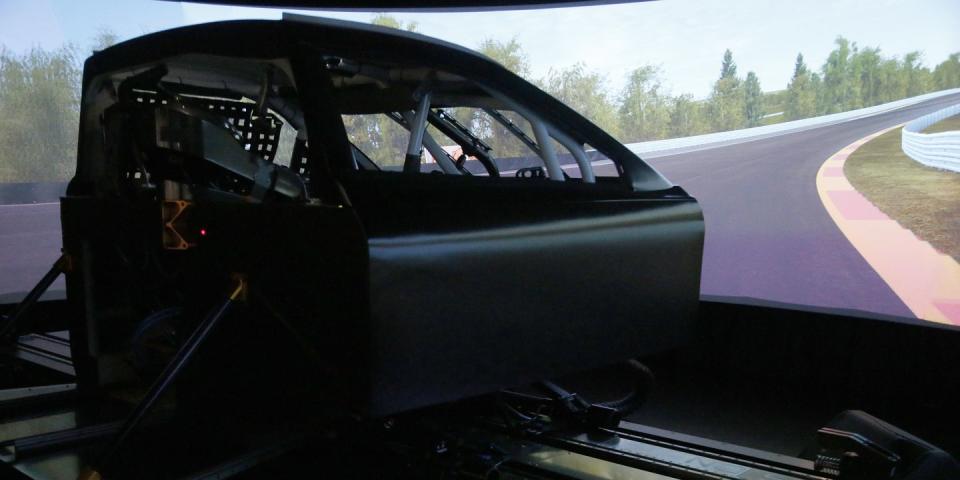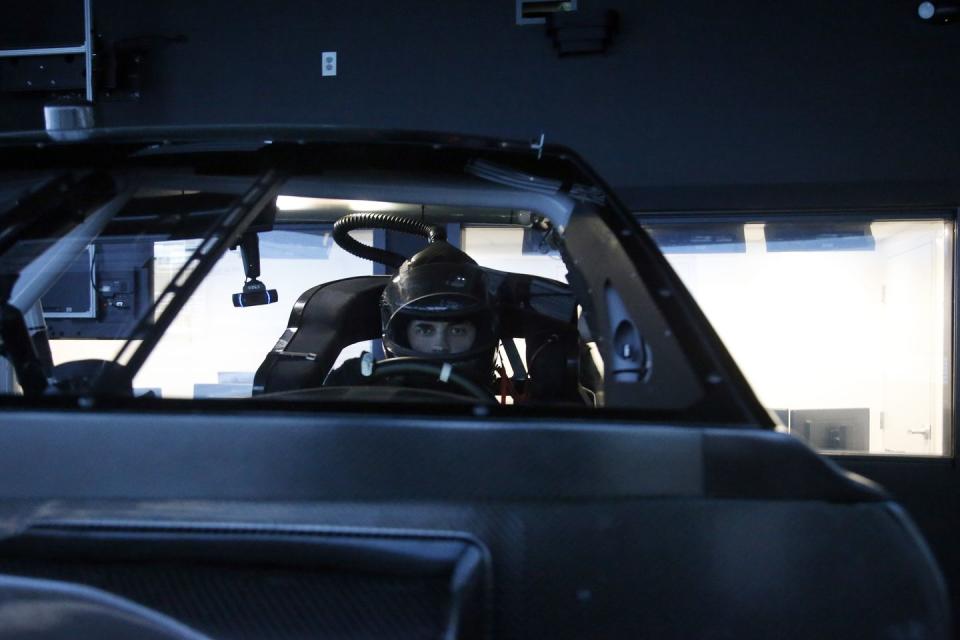How Toyota's Racing Simulators Are Creating Better Street Cars

Cars in NASCAR's Cup series are specialized vehicles that may look like their road going counterparts but are very different underneath. Some may complain about using the stock car name for a car that is based on a tube chassis but the cars are built in this manner for a number of reason from safety to the type of tracks they race on. While there isn’t a Toyota Camry on the road that has a V8 like its NASCAR Cup car version, there are elements of the racing program that are making the road car better.
We spoke with Toyota Racing Development USA executives David Wilson and Tyler Gibbs to find out how simulation and testing tools that they built at the TRD USA facilities for their race cars are now being used to make Toyota road cars better. Their facility in Salisbury, North Carolina has a variety of tools that include an Advanced Vehicle Cornering Simulator (AVCS), a pull-down rig, an eight-post “shaker” rig, as well as a custom race simulator. These tools were acquired or built by the TRD USA team for use by the Toyota teams that they work with in NASCAR as well as the Lexus team that they work with in IMSA but now they are seeing a new use as they are implemented in road car testing.
Although race simulators are now becoming common in NASCAR, TRD was the first to build one at their facility for use by both the drivers and engineers. The race simulator consists of multiple components but the main parts are a front half of a Camry Cup car that is mounted on hydraulic cylinders and computers in the back that do all of the math and calculations for the simulation to try to replicate real world conditions.
The largest benefit of the simulator on the racing side is the ability to test a variety of configurations without having to actually put a car on track. The custom programming and underlying math model built by TRD engineers allow the teams to be able to put a driver in the simulator and input their cars suspension setup into the computer and replicate the experience of being on the race track. This is beneficial as a driver training tool especially for new drivers. The secondary benefit is for the crew chiefs and engineers as they can make changes to a car to see how it will respond to a suspension setup in just a few seconds which is beneficial as practice times are often limited when they are actually at the track.
Movable components of the simulator allow a driver inside to feel how the car will respond on the track as the various hydraulic and electronic components move the Camry rig around based on inputs from the computer system. Crew chiefs and engineers can also play with a variety of suspension adjustments virtually that they can change in seconds versus minutes at the track and get immediate feedback from the driver.
The underlying math model that runs all of this simulation is proprietary to the TRD team and they use a lot of their other tools like sensors on the car to be able to feed it data to make calculations. These sensors allow them to make a virtual map of a race track while they are there that records things like elevation, banking, and even dips in the track so that they can replay it on the simulator.

These sensor are also key in their road car testing and what is allowing them to help with testing of prototypes for Toyota road cars. One example that Wilson and Gibbs discussed is having the ability to drive something like Angeles Crest Highway in California and records the road for their simulator. Once they have the road recorded they can take something like a Camry or Corolla and input its information into the simulator and virtually drive that road.

 Yahoo Autos
Yahoo Autos 